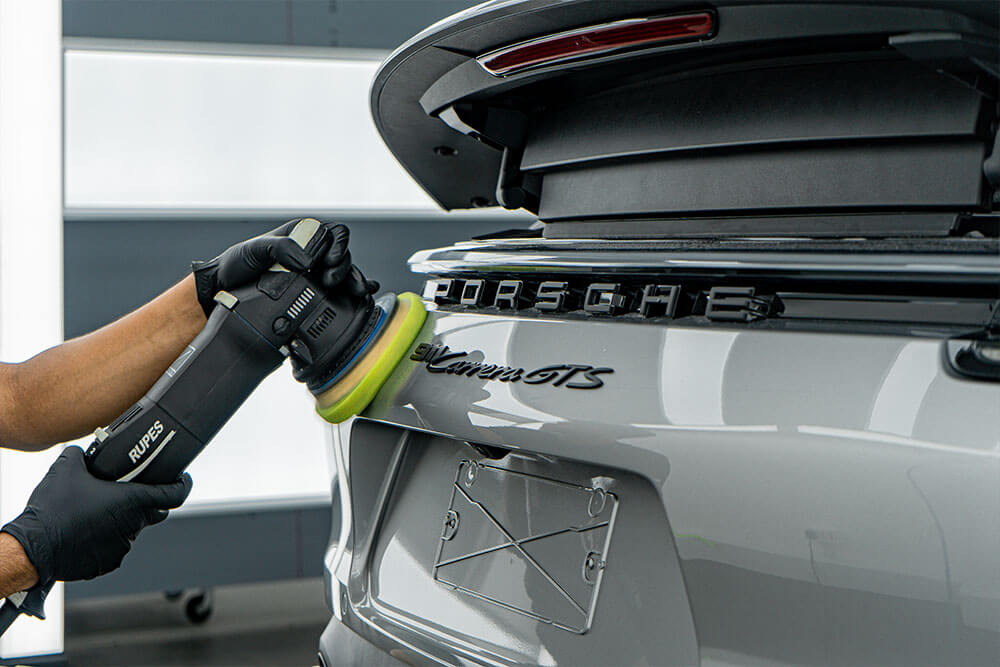
Picture this – it’s a scenario we hear far too often from drivers right here in Dubai. You’ve just had a fender bender. No biggie, your insurance is going to cover the body panel repair, right? But then, when you finally get your car back, you’re suddenly hit with a completely separate, unexpected bill for a whopping AED 2,500. Why? To replace the paint protection film (PPF) that got damaged in the accident. Suddenly, that amazing shield you invested in has turned into a pretty significant out-of-pocket expense. This isn’t just some rare oversight; it’s a massive blind spot that catches so many car owners totally off guard.
In the aftermath of an accident, your first thought probably zips straight to that 10-year PPF warranty you got, right? But here’s the absolutely crucial misunderstanding: that warranty is designed to cover manufacturing defects – things like yellowing or bubbling. It very, very explicitly does not cover damage from a collision. So, if your PPF gets wrecked in a crash, your auto insurance is basically your only real path to getting it fixed. And even then, getting your PPF covered isn’t always as automatic as you might hope.
This guide is going to be your go-to, step-by-step roadmap for exactly this kind of frustrating situation. We’ll break down the absolutely critical difference between your PPF warranty and your car insurance, and then we’ll lay out the precise steps you need to take to make sure your car’s paintwork protection gets properly restored without you having to foot that unexpected bill.
The First, Crucial Distinction: Warranty vs. Insurance – Don’t Get Caught Out!
Look, after an accident, when your head’s spinning, it’s super easy to get confused. But understanding the two different types of protection you have for your PPF – and what each one is actually for – is vital. Mixing these up is honestly the most common, and most expensive, mistake we see owners make.
What Your PPF Warranty Really Covers: Your manufacturer’s warranty, which often runs for a good 5 to 10 years, is essentially a guarantee against flaws in the product itself. It’s there for issues that pop up from normal wear and tear, things like:
- Yellowing or discoloration from sun exposure
- Annoying bubbling or blistering
- Peeling or lifting because the adhesive failed
- Cracking of the film itself
What Your Warranty Absolutely Does NOT Cover: This is the big one, the point you need to tattoo on your brain: a PPF warranty, without exception, does not cover damage caused by accidents, collisions, bad maintenance, or just plain misuse. When another car impacts yours, that’s not a product defect, is it? So, trying to file a warranty claim for crash damage? That’s just barking up the wrong tree.
The Role of Your Car Insurance: Any damage your car takes in an accident falls squarely under your auto insurance policy (or, thankfully, the at-fault party’s). The whole point of an insurance claim is to bring your vehicle back to its pre-accident condition. Since your car was protected with PPF before the crash, replacing that film is a necessary and completely legitimate part of the overall repair claim. It’s about making your car whole again.
Immediate Steps: Your “Oh No, I Crashed!” Checklist
In those first few moments after an accident, it’s totally normal to feel overwhelmed. But taking just a few specific, calm steps right away can seriously make all the difference in making sure your PPF gets covered in the upcoming insurance claim.
Step 1: Document Everything Meticulously. First, make sure everyone’s safe. Then, pull out your smartphone – it’s your best friend right now. Snap detailed, clear photos of all the damage from every possible angle. And this is crucial: get close-up shots that clearly show where the PPF panels have been torn, scuffed, or punctured by the impact. This photo evidence is absolutely vital for proving to your insurance provider that the film was indeed on your car and got damaged directly because of the accident. Don’t skip this!
Step 2: Get an Official Police Report Filed. If you’re in the UAE, a police report isn’t just a good idea; it’s a mandatory requirement for any accident-related insurance claim. Make absolutely sure you get that official report at the scene, because your insurance company simply won’t budge on the claim without it.
Step 3: Call Your Insurance Provider Immediately. Don’t procrastinate. Get on the phone with your insurer about the accident as soon as humanly possible. And listen carefully: when you’re describing the damage to the claims agent, you must be explicit. State clearly that your vehicle is fitted with paintwork protection film and that the film on the damaged panels will need to be removed and replaced as part of the repair process. Do not, under any circumstances, assume they’ll just know, or that it’ll be added automatically. Making this declaration right from that very first call sets the stage for a fully comprehensive claim. Trust me on this one.
Navigating the Insurance Claim for Your PPF – It’s Not Automatic!
Getting your PPF replaced under your insurance policy really boils down to one simple principle: a standard policy is designed to put your car back exactly the way it was before the accident. Since the PPF on those panels was part of that pre-accident condition, replacing it is a totally legitimate part of the repair. However, and this is the important bit, coverage is almost never automatic, so you have to be proactive to ensure it gets included.
Provide Proof of Installation: This is, without a doubt, the most critical step. You absolutely must have the original receipt or invoice from your PPF installation. This document is non-negotiable. It gives your insurer concrete proof that the film was there, what its value was, and that it was on the car before the accident happened. No proof, no coverage.
Specifically Ask for PPF Replacement: I can’t stress this enough: do not assume the body shop or the insurance adjuster will just automatically add the film replacement to the repair estimate. You must explicitly state that the damaged car paintwork protection needs to be replaced. Just like that unfortunate car owner in Dubai who found out the hard way: if you’re not proactive, the insurer might pay for the panel repair, but leave you with a separate, thousands-of-dirhams bill to reapply the film yourself. Don’t let that be you!
By giving them clear documentation and making a very specific request, you’re not asking for an upgrade; you’re simply making sure your insurance policy lives up to its promise to restore your vehicle completely. It’s your right.
The Repair Process: That Crucial Waiting Period (Seriously, Don’t Rush It!)
Once your insurance claim gets the green light, the body shop will start their work. That usually means repairing or replacing the damaged panel and repainting it to perfectly match the factory finish. This is standard procedure. But what happens next is an absolutely vital, expert-level step that’s often overlooked, and it’s critical for the long-term success of your new car paintwork protection.
The All-Important Curing Time: You absolutely, positively cannot apply new PPF to a freshly repainted panel right away. New automotive paint needs a significant amount of time to “gas out” and fully cure. During this period, solvents from the new paint and clear coat are slowly evaporating into the air. If you apply PPF too soon, you’ll trap these solvents under the film, which is a recipe for bubbling, adhesion failure, and that dreaded cloudy appearance. Yuck!
Even more importantly, the film’s strong adhesive can actually bond to uncured paint. So, if that film ever needs to be removed down the road, it could literally peel the new paint right off the panel, causing catastrophic, gut-wrenching damage. You definitely don’t want that.
The Professional Rule of Thumb: The industry standard, and what we highly recommend, is that you must wait a minimum of 30 days – and ideally, 60 to 90 days – after the panel has been repainted before you can safely install new PPF. This generous waiting period allows the paint to fully harden and ensures all those solvents have completely evaporated. You absolutely must communicate this crucial waiting period clearly with both your body shop and your PPF installer to guarantee the final reapplication is a complete success. Don’t let anyone rush you.
A Proactive Approach Means a Full Recovery
So, let’s wrap this up. The key takeaways are crystal clear: your PPF warranty is a promise against product flaws, not a get-out-of-jail-free card for accidents. For collision damage, your auto insurance is the proper, and only, channel to pursue for recovery. And for a successful, complete repair? It all hinges on you being proactive.
By sticking to a clear action plan – meticulously documenting the damage, specifically asking for the PPF replacement in your claim, providing your original invoice as concrete proof of its value, and respecting that absolutely crucial paint curing time before reinstallation – you can navigate this whole stressful process effectively.
We can’t stress this enough: please, every car owner, take one simple, proactive step today: find your PPF installation receipt and tuck it away safely with your other important vehicle documents. Being prepared with this proof of your investment is hands down the single best way to ensure a smooth, comprehensive repair that restores not just your car’s body, but its complete shield of paintwork protection. You’ll thank yourself later!


